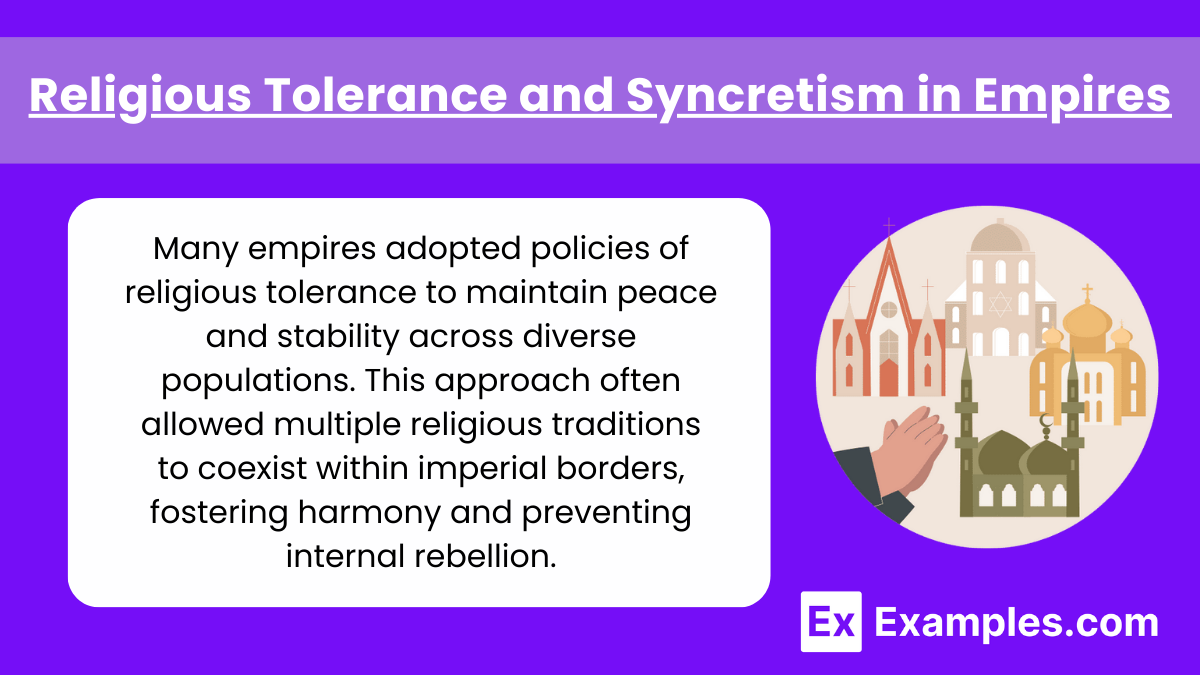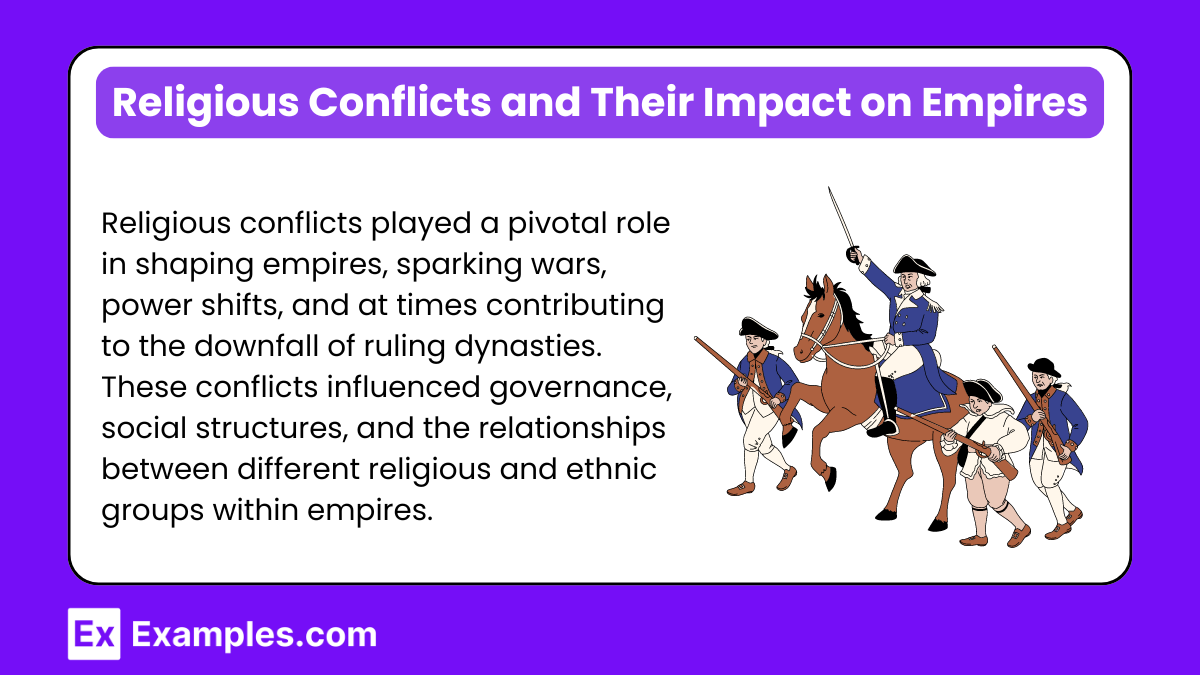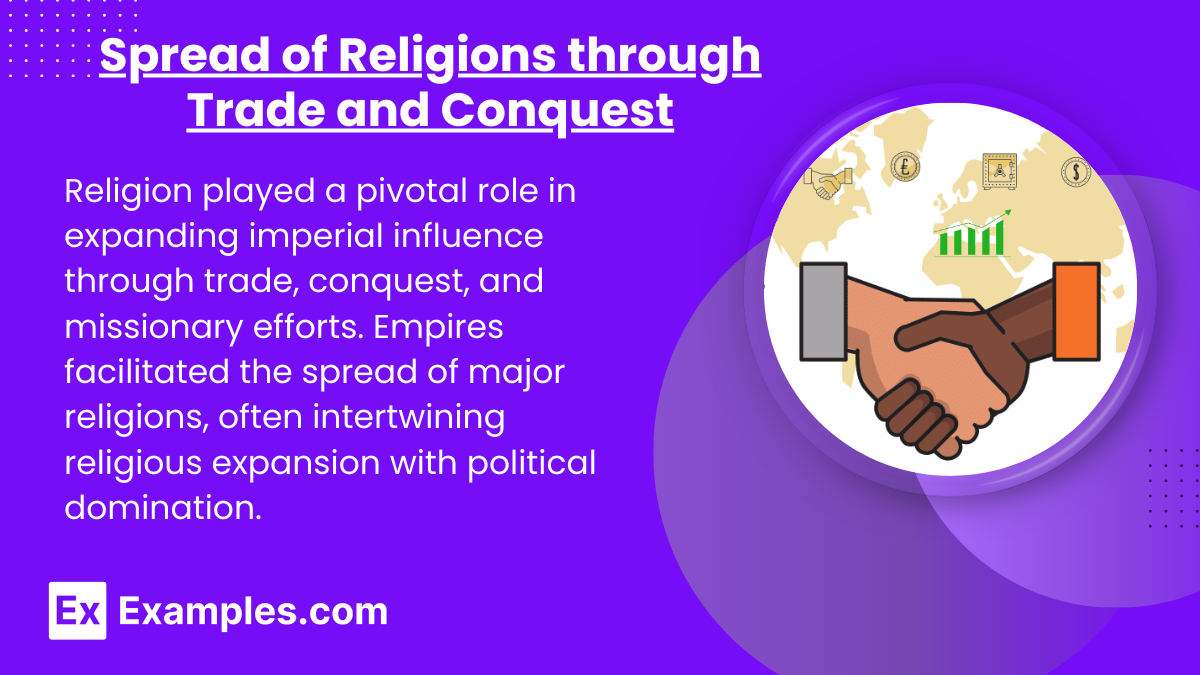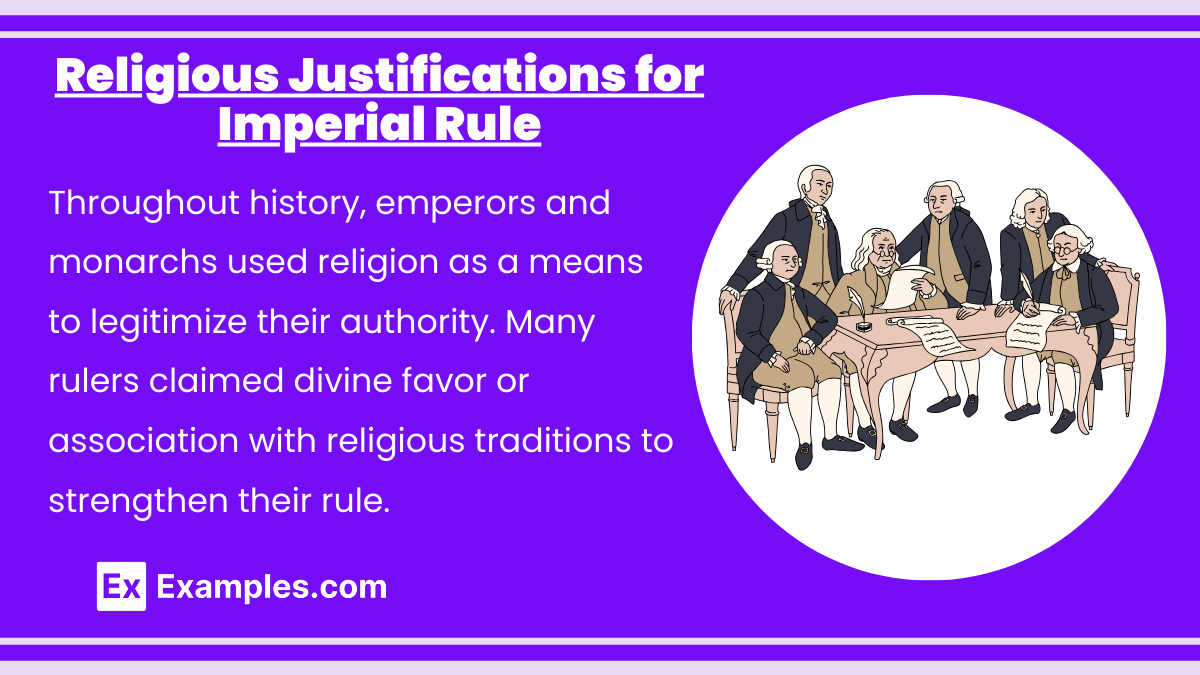Religious developments in empires played a crucial role in shaping political structures, social hierarchies, and cultural exchanges. Empires often used religion to legitimize their rule, foster unity, or justify conquest. Additionally, religious tolerance, conflicts, reforms, and syncretism influenced the relationships between different religious communities, contributing to the growth, stability, or downfall of empires throughout history.
Learning Objective
In studying “Religious Developments in Empires” for AP World History: Modern, you should learn to identify how religion influenced the governance, culture, and expansion of empires. Analyze the role of religious institutions, leaders, and ideologies in legitimizing imperial rule and shaping social hierarchies. Evaluate how empires promoted, tolerated, or suppressed various religions to maintain control, foster unity, or manage diversity. Additionally, explore the impact of religious conflicts, conversions, and reforms on imperial stability, governance, and interactions with other empires, as well as the long-term effects on global religious landscapes.
1. Religious Tolerance and Syncretism in Empires

- Many empires adopted policies of religious tolerance to maintain peace and stability across diverse populations. This approach often allowed multiple religious traditions to coexist within imperial borders, fostering harmony and preventing internal rebellion.
- In the Ottoman Empire, for example, the millet system enabled various religious groups such as Christians, Jews, and others to govern themselves under their religious laws while recognizing the overarching authority of the Sultan. This system helped prevent sectarian violence and kept the empire stable despite its religious diversity.
- The Mughal Empire under Akbar the Great is another prime example of religious tolerance. Akbar’s policies sought to blend elements of Hinduism, Islam, and other religions in India, promoting unity among his subjects. He even created a syncretic religion, Din-i Ilahi, which aimed to reconcile religious differences and bring harmony to the empire. Though Din-i Ilahi never gained mass following, Akbar’s overall religious inclusivity earned him admiration.
2. Religious Conflicts and Their Impact on Empires

- Religious conflicts significantly shaped the political and social landscape of empires, often leading to wars, shifts in power, and even the collapse of certain dynasties.
- The Thirty Years’ War (1618–1648) in Europe is a major example, a religious conflict that pitted Catholics against Protestants across the Holy Roman Empire. Although rooted in religious disputes following the Protestant Reformation, the conflict soon evolved into a political struggle, culminating in the Peace of Westphalia, which redefined European political boundaries and religious freedoms.
- In the Islamic world, the rivalry between the Ottoman Empire (Sunni) and the Safavid Empire (Shia) was deeply influenced by sectarian religious differences. The Battle of Chaldiran in 1514 between the two empires highlighted this conflict, leading to long-lasting animosities between Sunni and Shia Muslims in the region. The Safavids institutionalized Twelver Shi’ism, making it the state religion, which further heightened tensions with their Sunni neighbors.
3. Spread of Religions through Trade and Conquest

- Religion played a pivotal role in expanding imperial influence through trade, conquest, and missionary efforts. Empires facilitated the spread of major religions, often intertwining religious expansion with political domination.
- The Ottoman Empire spread Islam throughout the Balkans, North Africa, and into parts of Europe, integrating large Christian populations under its rule. Sufi mystics, with their more inclusive and spiritual approach to Islam, were often instrumental in converting populations across South and Southeast Asia, integrating local customs and beliefs into Islamic practices.
- Christianity spread globally through European imperialism, particularly during the Age of Exploration. Missionaries, especially from the Catholic Church, traveled to the Americas, Africa, and Asia to convert indigenous populations. Notable missionary orders, such as the Jesuits, played a significant role in these efforts. For example, Jesuit missions in China and Japan sought to blend local customs with Christianity to make conversion more palatable, although they faced resistance from local governments.
4. Religious Justifications for Imperial Rule

- Throughout history, emperors and monarchs used religion as a means to legitimize their authority. Many rulers claimed divine favor or association with religious traditions to strengthen their rule.
- In Europe, the concept of the Divine Right of Kings held that monarchs were appointed by God and thus were accountable only to Him. This was a central tenet of absolutist rule, particularly in France and England during the 17th century.
- In China, the Mandate of Heaven provided the same justification for imperial rule. According to this belief, the emperor was divinely chosen to rule, and his right to govern depended on his ability to maintain order and harmony in the empire. If the emperor failed in his duties, he would lose the Mandate of Heaven, and rebellion or natural disasters would be seen as signs of this loss.
- In the Islamic world, rulers like the Caliphs in the Umayyad and Abbasid Caliphates claimed both religious and political authority as successors to the Prophet Muhammad. The intertwining of political and religious leadership in the Islamic world shaped governance and law, reinforcing the power of the ruling elite.
5. Impact of Religion on Social Structures

- Religion often influenced the social hierarchy within empires, reinforcing existing structures or creating new ones. Religious traditions were sometimes used to justify social stratification, while in other cases, they inspired movements seeking equality or justice.
- In the Mughal Empire, the caste system remained a defining feature of social life, deeply rooted in Hindu religious beliefs. The Mughal rulers, though Muslim, generally allowed the caste system to continue, as it maintained social order.
- In the Americas, European colonizers often used Christianity to justify the conquest and enslavement of indigenous populations. The doctrine of just war provided a religious rationale for the enslavement and forced conversion of indigenous peoples in the Spanish and Portuguese colonies, which had devastating social and demographic impacts.
Examples
Example 1: Ottoman Empire: Millet System and Religious Tolerance
The Ottoman Empire maintained stability by implementing the millet system, which allowed different religious groups like Christians, Jews, and others to govern themselves under their own religious laws. This policy of tolerance ensured diverse religious communities could coexist peacefully, contributing to the longevity and stability of the empire.
Example 2: Mughal Empire: Akbar’s Religious Syncretism
Akbar the Great of the Mughal Empire is known for promoting religious tolerance and syncretism. He encouraged dialogue between Hindus, Muslims, and Jains and even founded a syncretic religion called Din-i Ilahi, aimed at merging various religious traditions. Akbar’s policies helped unify his empire and reduce religious tensions in a diverse society.
Example 3: Safavid Empire: Twelver Shi’ism as State Religion
In the Safavid Empire, Twelver Shi’ism was established as the official state religion under Shah Ismail I. This religious policy distinguished the Safavids from their Sunni neighbors, like the Ottoman Empire, and contributed to conflict, such as the Battle of Chaldiran in 1514. Twelver Shi’ism became a defining feature of Iranian identity.
Example 4: European Reformation and Religious Wars
The Protestant Reformation, initiated by Martin Luther in 1517, challenged the authority of the Catholic Church and resulted in the fragmentation of religious unity in Europe. This sparked a series of religious wars, including the Thirty Years’ War, which dramatically altered European political and religious landscapes, culminating in the Peace of Westphalia in 1648.
Example 5: Spanish Empire: Catholic Missionary Work in the Americas
The Spanish Empire used Catholicism as a tool for colonization and religious conversion in the Americas. Missionaries, such as the Franciscans and Jesuits, played a significant role in converting indigenous populations, often forcibly. The Spanish justified their conquests using religious doctrines and sought to impose European Christianity on native populations, significantly altering indigenous cultures and societies.
MCQs
Question 1:
Which of the following empires is known for implementing the millet system to manage religious diversity within its borders?
A) Mughal Empire
B) Safavid Empire
C) Ottoman Empire
D) Spanish Empire

Answer: C) Ottoman Empire
Explanation: The Ottoman Empire used the millet system to allow religious communities such as Christians, Jews, and others to govern themselves according to their own religious laws. This policy of religious tolerance helped the empire maintain stability over its diverse population, ensuring peaceful coexistence among different religious groups.
Question 2:
What was the significance of Akbar’s Din-i Ilahi in the Mughal Empire?
A) It became the official state religion of the Mughal Empire.
B) It was an attempt to create a syncretic religion blending elements of Hinduism and Islam.
C) It sparked a major religious conflict with the Safavid Empire.
D) It was a movement to convert Hindus to Islam by force.
Answer: B) It was an attempt to create a syncretic religion blending elements of Hinduism and Islam.
Explanation: Akbar the Great attempted to foster religious unity and tolerance within the diverse Mughal Empire by promoting Din-i Ilahi, a syncretic religion that combined elements of Hinduism, Islam, and other traditions. Although it didn’t gain widespread following, it symbolized Akbar’s commitment to religious inclusivity and tolerance.
Question 3:
The Protestant Reformation led to which of the following?
A) The unification of Christianity under the leadership of the Pope.
B) The establishment of Twelver Shi’ism as the state religion of the Safavid Empire.
C) The fragmentation of religious unity in Europe and the outbreak of religious wars.
D) The creation of the millet system to manage religious diversity.
Answer: C) The fragmentation of religious unity in Europe and the outbreak of religious wars.
Explanation: The Protestant Reformation, initiated by Martin Luther in 1517, challenged the authority of the Catholic Church, leading to a split in European Christianity. This fragmentation resulted in religious conflicts, including the Thirty Years’ War, which transformed the political and religious landscape of Europe and ended with the Peace of Westphalia in 1648.


